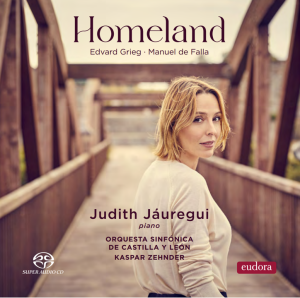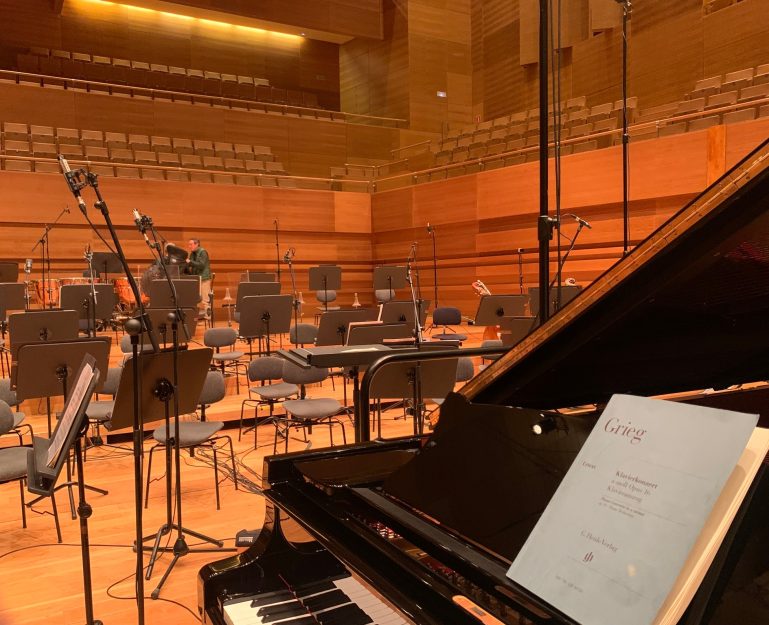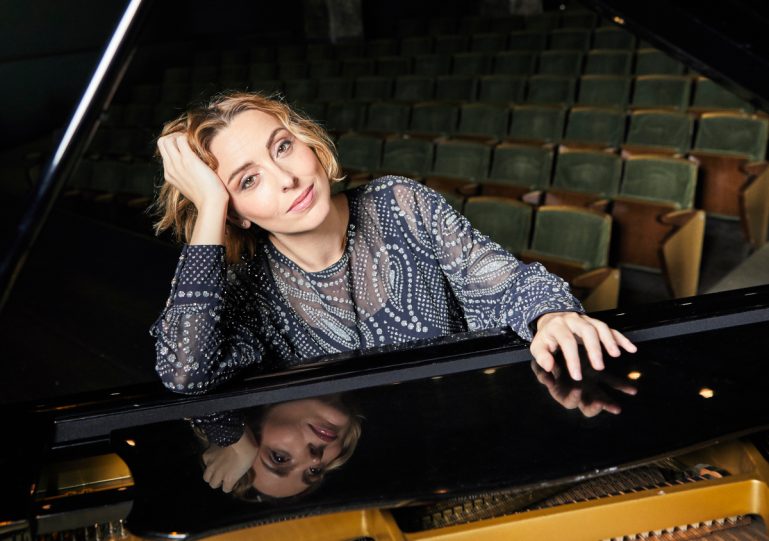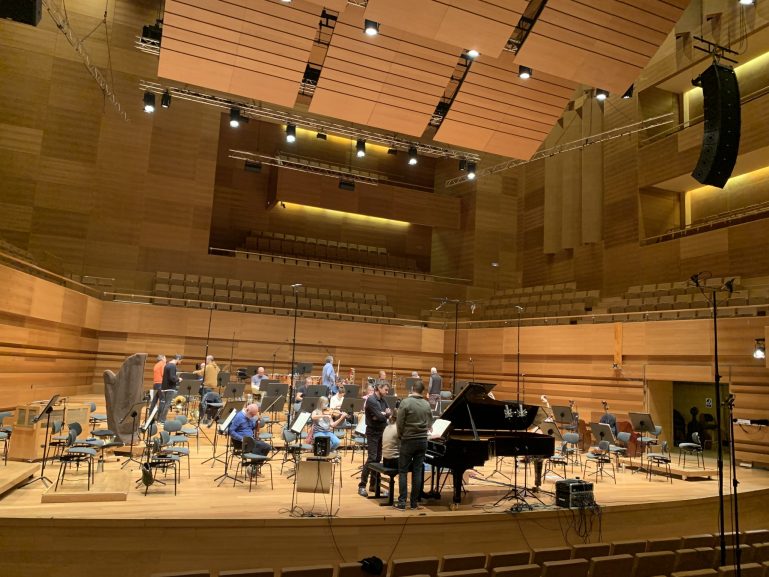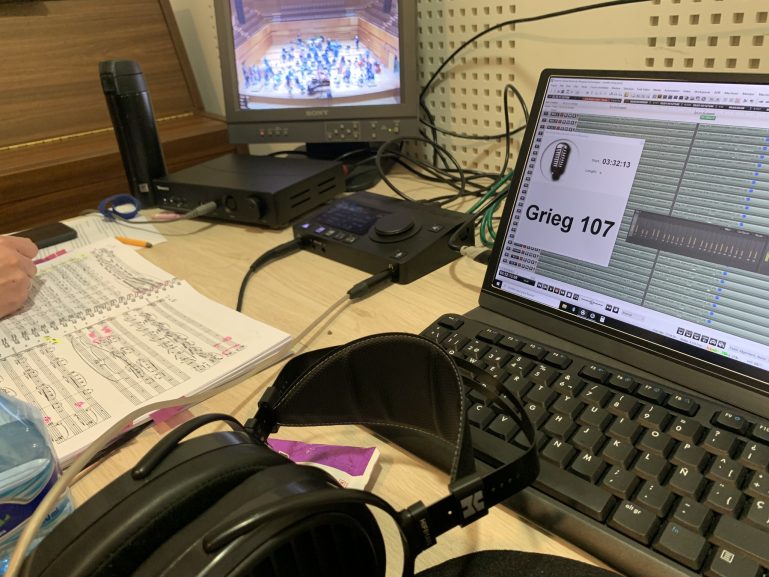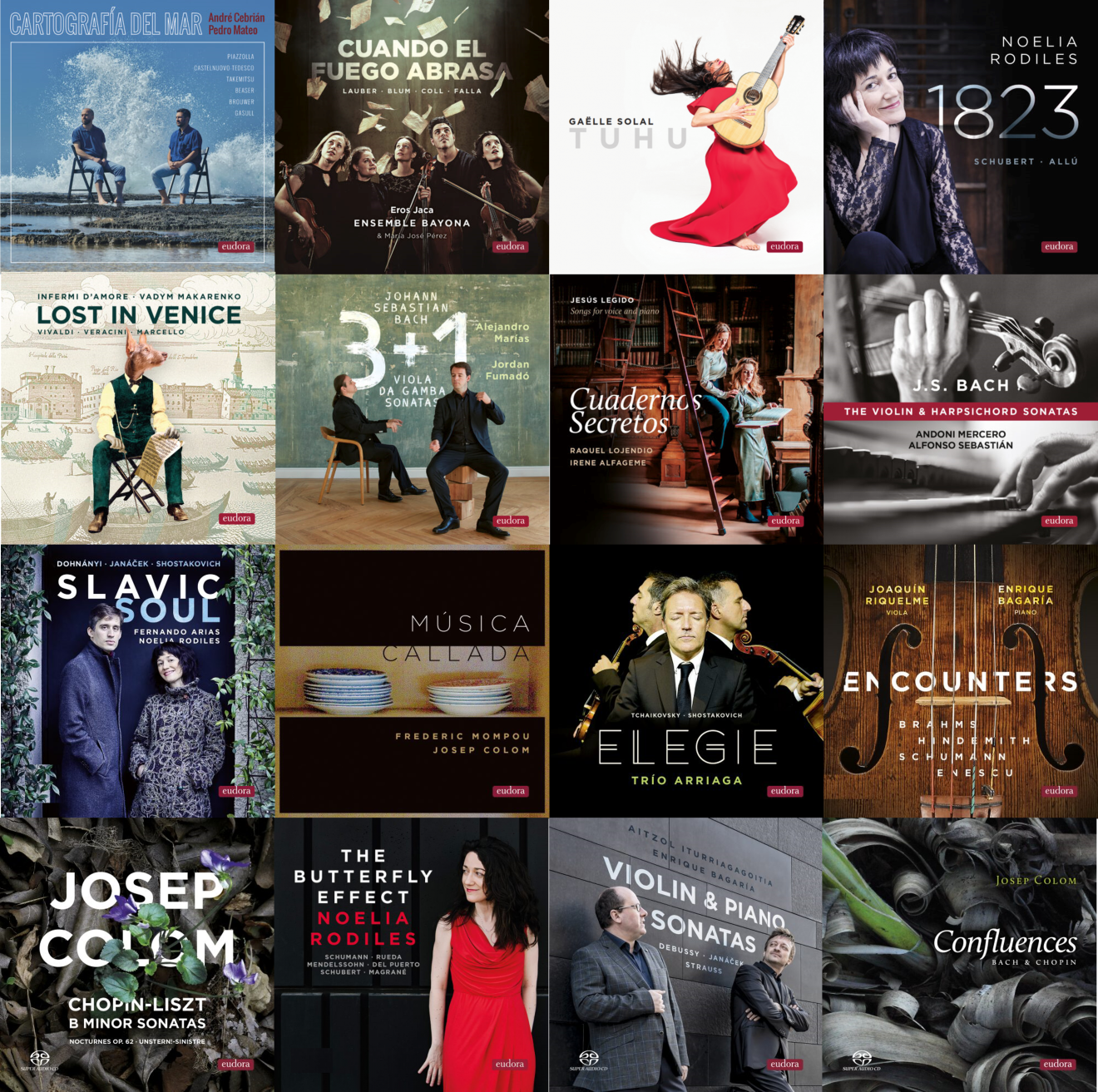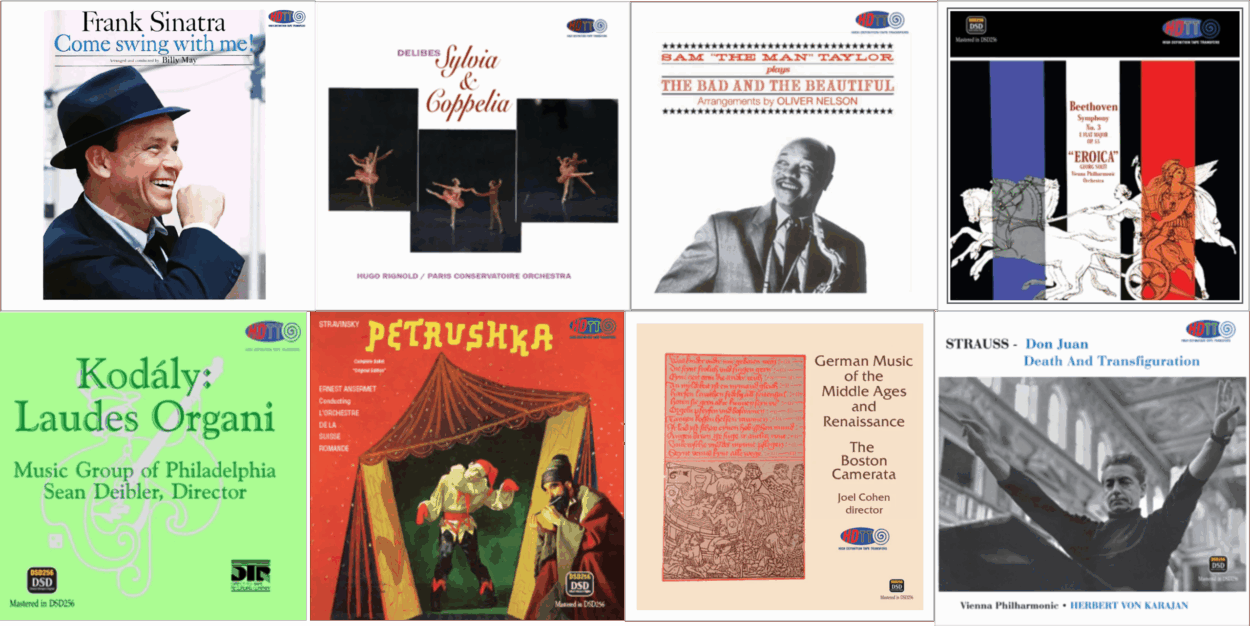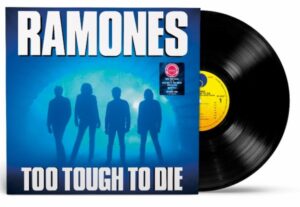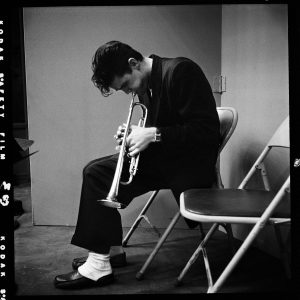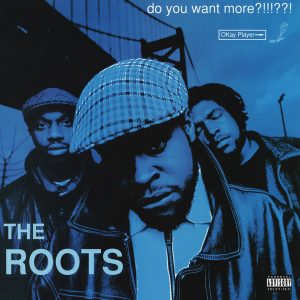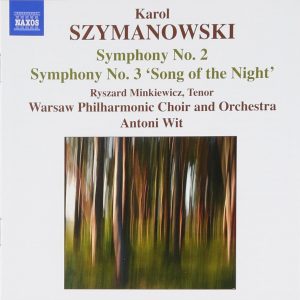Utter transparency. Abundant detail. Extreme delicacy and nuance. A soundstage to die for. Unrestrained dynamics and immense power. This is a recording to cherish, a recording to celebrate.
Homeland - Grieg's Piano Concerto in A minor and De Falla's Noches en los Jardines de España (Nights in the Gardens of Spain), Judith Jáuregui (piano), Kaspar Zehnder, Orquesta Sinfónica de Castilla y León. Eudora Records 2024 (Pure DSD256, stereo and 5.1 channel surround). Available only from NativeDSD HERE. See below for 30% off discount code offer to Positive Feedback readers.
Such were my reactions when first listening to this amazing new recording from Gonzalo Noqué and Eudora Records. After repeated listenings, my initial reactions hold. This album is a tour de force of orchestral recording magic.
And it is entirely recorded, edited and mastered in Pure DSD256*.
Not a bit of PCM processing anywhere in the production chain. From microphones, to editing, to mixing, to mastering, all is accomplished entirely in the DSD domain.
*Technically, this is pure PDM (pulse density modulation) using both single-bit and multi-bit PDM, with the final output being the single-bit PDM standard that is known under the Sony marketing name "DSD". But for simplicity, I refer to this as DSD in the title and throughout the article. Whether multi-bit or single-bit, it is all PDM and not PCM (pulse code modulation). See Tom Caulfield's explanation HERE.
This is perhaps the only large orchestral recording made to commercial standards (with a full complement of 22-27 microphone channels mixed post-production in the studio) that has been produced in Pure DSD256 throughout. Yes, I have heard some other wonderful Pure DSD256 recordings of large orchestral performances. The Pure DSD256 recordings from Hunnia Records come most immediately to mind, such as the remarkable Bartok Piano Concerto No. 1 with László Borbély (HERE). But most Pure DSD orchestral recordings that I've heard have been non-commercial recordings, and most have been minimally mic'd, with limited post-production mixing—truly special, but not commercial, recordings.
I've been told over the years that making a large orchestral recording to commercial standards is simply not possible with DSD. Supposedly, you can't mix DSD.
Well, I'm here to tell you it is possible.
And the result is the most transparent verisimilitude of an orchestra that I have heard in a commercial recording. Ever. It simply sounds like the real thing: no compression, full dynamic range, incredible detail, beautiful capture of the timbre of the full range of instruments found in a large orchestra performance. Most apparent is the utter transparency of the sound. There is nothing between you and the instruments themselves. For me, "transparency" is an ultimate goal in the recording of natural acoustic instruments. And this recording delivers that transparency in spades with its Pure DSD256 heritage.
And you can hear it for yourself with the free download sample at full DSD256 resolution that Gonzalo has graciously agreed for Positive Feedback to make available to you. More about that below with my further discussion of how this recording was made.
But first, let me tell you about the music on this album.
The performances by Spanish pianist Judith Jáuregui are invigorating, brilliant and an utter joy to hear. She plays with power, precision, and technical mastery. But, more importantly, she plays with emotion, fluidity, and a striking singularity. She clearly has something unique to say. Born in San Sebastian in northern Spain, she has grown up in a multicultural environment through her Basque mother and her Mexican father who grew up in France. After initial studies and a debut recital at the age of just 11, she moved to Munich to study with the Russian pianist Vadim Suchanov at the Richard-Strauss Konservatorium.
When asked about the music she plays best, she replied, "I am comfortable in general in the romantic light of Brahms, Liszt, Chopin… where the piano sounds in all its glory. I feel very natural also in French music since I have a french side: my father was born in Mexico but grew up in France, and I was born in San Sebastian, just 20 km from the border between Spain and France. Many of my childhood memories are from the other side of the border, where Ravel was born. I am attracted to everything that has to do with the Paris of the beginning of 20th century. I have also a very special link with the music of Spanish composer Federico Mompou, with its purity, its essence." (HERE)
In performing the music of Norwegian Edvard Grieg and then the music of Andalucían Manuel de Falla, Jáuregui demonstrates remarkable comfort traversing cultures to find the common love of homeland, the title of the album. Says Jáuregui, "A homeland is the profound affective bond between a human being and their land, their culture, their nature. It is the root from which our initial experiences grow, leaving an indelible mark on our identity. It is also the ensemble of physical and emotional homes that we construct throughout our lives... On this album we find two authors who made of their love for their homeland a musical message: Edvard Grieg and Manuel de Falla. Both scholars of the folklore of their respective origins, Norway and Andalucía, they knew how to introduce and emphasize elements of this in their music, creating a new, unique, original and personal register."
And throughout, Judith Jáuregui's expressive refinement and infectious brightness of being bring to us a joy in the music that she seems delighted to share.
Conductor Kaspar Zehnder and the Orquesta Sinfónica de Castilla y León provide excellent partnership in this musical journey. Orchestral ensemble playing is tight. There is overall a fluid flow and ease with which the orchestra approaches the music, very aptly complementing Judith Jáuregui's own fluidity and ease.
Oh, and did I say that these are large orchestra works? Yes, indeed they are. De Falla scored Nights in the Gardens of Spain for piano, three flutes and piccolo, two oboes and English horn, two clarinets, two bassoons, four horns, two trumpets, three trombones and tuba, timpani, cymbals, triangle, celesta, harp, and strings. The variety of timbre is an aural delight.
The one sonic weakness of this album is the overly forward piano sound in the Grieg Piano Concerto. It is too prominent, too divorced from the overall soundstage of the orchestra. Fortunately, the sound of the orchestra is just fine. Very balanced, very well integrated, very natural.
In contrast, the piano sound in Nights in the Gardens of Spain is beautifully well integrated with the overall sound of the orchestra. It sounds here as I assume Gonzalo wished for all of it to sound. And, accordingly, it is this selection, the opening movement of Nights in the Gardens of Spain, that I have chosen to offer to you as a free download sample. You can hear for yourself what a brilliantly mixed and mastered Pure DSD256 recording is capable of delivering.
Free Sample Download
This free sample download, all 10:32 minutes and 1.7GB of it, is available courtesy of Gonzalo Noqué and NativeDSD. It is track four from the album Homeland, Manual de Falla's Noches en los Jardines de España (Nights in the Gardens of Spain): En el Generalife (the jasmine-scented gardens surrounding the Alhambra):
Use this link to download the Pure DSD256 file. This file is a Pure DSD file with no PCM processing. (For best results, please be sure your DAC is capable of playing a DSD256 data stream without remodulating or converting it.)
Use this link to download the track as a 352.8kHz DXD/PCM file. This DXD file is provided for those who cannot play DSD256 and for those who'd simply like to compare formats. This DXD file is the original edited PCM session mix, with no intermediate conversions or remodulations.
Discount Code for Positive Feedback Readers
For a limited time, Gonzalo and NativeDSD graciously extend to Positive Feedback readers a discount when purchasing the full album at NativeDSD. Use discount code HOMELAND24 for 30% off the digital download of any resolution of the album Homeland at NativeDSD.
Please note that only albums downloaded from NativeDSD will be in Pure DSD. Any other release you may find, including any SACD, will have been PCM processed. This is because the Pure DSD mixing and mastering of the album is accomplished by a collaboration between Gonzalo and NativeDSD's mastering engineer Tom Caulfield. Tom actually creates the Pure DSD mixes in Signalyst HQPlayer Pro from the Pure DSD tracking channels and mixing instructions provided by Gonzalo. You can't obtain it anywhere else.
The Recording Process and Pure DSD - a deeper dive for those similarly obsessed
I start with a format bias. For me, DSD256 presents a level of audio excellence unmatched by any other digital format. DSD256 delivers a degree of ultimate transparency and fidelity to the timbre of the instruments that subtly eludes DXD and any of the PCM resolutions. I wrote about my wife's and my experiences in this back in 2021: Pure DSD256 - What We Hear.
There is a reason Bob Witrak (High Definition Tape Transfers) makes all of his tape transfers in DSD256 even when further PCM post-processing will be required due to issues in the vintage tapes. There is also a reason Gonzalo Noqué (Eudora), Jared Sacks (Channel Classics), and Brendon Heinst (TRPTK) all lay down their microphone tracking channels in DSD256 even though they typically apply PCM post-processing in their classical music recordings to achieve the final results they are looking for. In all four cases, these exceptional audio engineers tell me they use DSD256 because it most accurately captures the sound of the source.
The problem with Pure DSD final releases is not that they can't be accomplished. It is because, as Gonzalo tells me via an email conversation, the problem is practicality. The mixing process for a Pure DSD release "is very time-consuming and impractical compared to a DXD mix workflow, which is very fast and straight forward."
And, in the Pure DSD realm, "you cannot use limiters or compressors, which is becoming more and more common in the Classical music recording world."
But, when I asked if he would make another Pure DSD recording of a large orchestra, his reply was, "Yes. In fact I have another orchestral recording coming before summer where we'll do it again. As I said in the article you wrote about this topic (Mixing in Pure DSD - No PCM Allowed), there's something that I love conceptually about remaining in DSD256 for the whole process. Maybe it's just the idealistic, utopic side of me, but I do think a Pure DSD256 release represents the best quality achievable in the digital world right now. Whether the difference is large or small, noticeable by many or few, I find it very rewarding having the opportunity to work this way."
I asked about microphones and Gonzalo explained, "The main sound (I'd say at least 90% of the overall mix) comes from the main orchestral pair (2 x Sonodore LDM-54) and the four microphones used for the piano (2 Rens Heijnis modified Neumann U89 relatively close to the instrument and two Sonodore RCM-402 further away). The rest of the mix (around 10% of the overall mix) includes several spot microphones for the different orchestral sections: Schoeps MK4, Pearl CC22, Gefell, Neumann... There are overall 22 channels/microphones in Grieg's concerto and 27 channels/microphones in Falla's Noches en los Jardines de España.
In describing the mixing process at this scale, Gonzalo said that it was exactly as described in that last year's article discussing how Gonzalo and Tom Caulfield create a Pure DSD recording: Mixing in Pure DSD - No PCM Allowed. Just many more microphone channels! "Once I found the mix I was happy with within a DXD project in Pyramix, I then started "translating" the visual representation found in Pyramix's mixer into the command line-style found in HQPlayer." Tom then takes these command line mixing instructions into HQPlayer Pro and generates the Pure DSD256 file. The process clearly works. But as Gonzalo observes, "It is definitely a very impractical workflow."
As explained to me most patiently by Tom, "Recorded music post processing and mastering is done using tools named Digital Audio Workstation (DAW). These provide the function of editing and microphone channel mixing to the final channel format, plus the numerous sweetening provisions like channel equalization. With the exception of HQPlayer Pro, they all convert a continuous DSD bitstream into discrete PCM samples for processing. HQPlayer Pro uses remodulation at the original DSD bitrate for channel mixing and EQ. For acoustic recorded music, requiring minimal channel sweetening, HQPlayer Pro is the ideal DAW for channel mixing without the incurred filtering effects of PCM conversion."
What Gonzalo and Tom have done is remarkable. Gonzalo has essentially mixed this album twice. Once in PCM in Pyramix to create the channel mixes he wants for a final product, and again to copy out the mixing and EQ parameters for HQPlayer Pro.
Gonzalo could stop once he has his Pyramix PCM mix. He has a fully satisfactory commercial release of the album and he can make all of his format renders from this PCM mix using Pyramix Album Publishing, including a DSD256 render. Most labels do stop here.
But, Gonzalo does not stop. He goes that major step further. He uses all of the settings that he's determined in his Pyramix final PCM mix, every channel, every fade, every mix, and translates those settings into line by line coding for the command language used in Jussi's Signalyst HQPlayer Pro.
Tom then loads the original DSD256 channels into HQPlayer Pro with command language parameters Gonzalo has created to mix again, but this time entirely in the DSD/PDM domain. Tom will then send the Pure DSD256 mix out of HQPlayer Pro to Gonzalo for approval. If Gonzalo approves, Tom will start this process all over again from the original DSD256 channels to generate each format render of this album that appears for sale on the NativeDSD website: DSD512, DSD128, DSD64, DXD, 192kHz PCM, and 96kHz PCM. Every file format is a separate independent render directly from the master DSD256 channels, so every format render found at NativeDSD will be as close in purity to the original DSD256 channels as is possible to make. (The DXD sample file download above was created this way.)
For both Gonzalo and Tom, this is an act of pure dedication and love for the art.
As an audiophile who has always valued the highest quality sound reproduction I can possibly achieve, I absolutely delight in Gonzalo's and Tom's willingness to strive for the pinnacle of what is currently achievable in digital sound recording and playback. Yes, it is impractical from a purely commercial standpoint. But, so are the single sided, 45-rpm, high purity vinyl discs that I was always eager to obtain in my days of listening to vinyl. It is the love for achieving excellence, to strive to create something that is as close to the maximally accurate reflection of the real acoustic event as possible using today's technology. And I feel so utterly grateful to fellow sound quality fanatics who are willing to take this effort.
So, I hope you will listen to this Pure DSD256 file from Eudora for yourself! I hope you will hear in your own system that which Ann and I hear, and that you will find in it the same joy of discovery that we find. And, I hope that you will encourage their continuing efforts to create for us such glorious recordings as this.
Here are some additional Pure DSD256 albums from Eudora that I've reviewed elsewhere in Positive Feedback (see search results HERE). I'd highly recommend any of these to you:
And, enjoy the music.
All images courtesy of Eudora Records and Gonzalo Noqué




